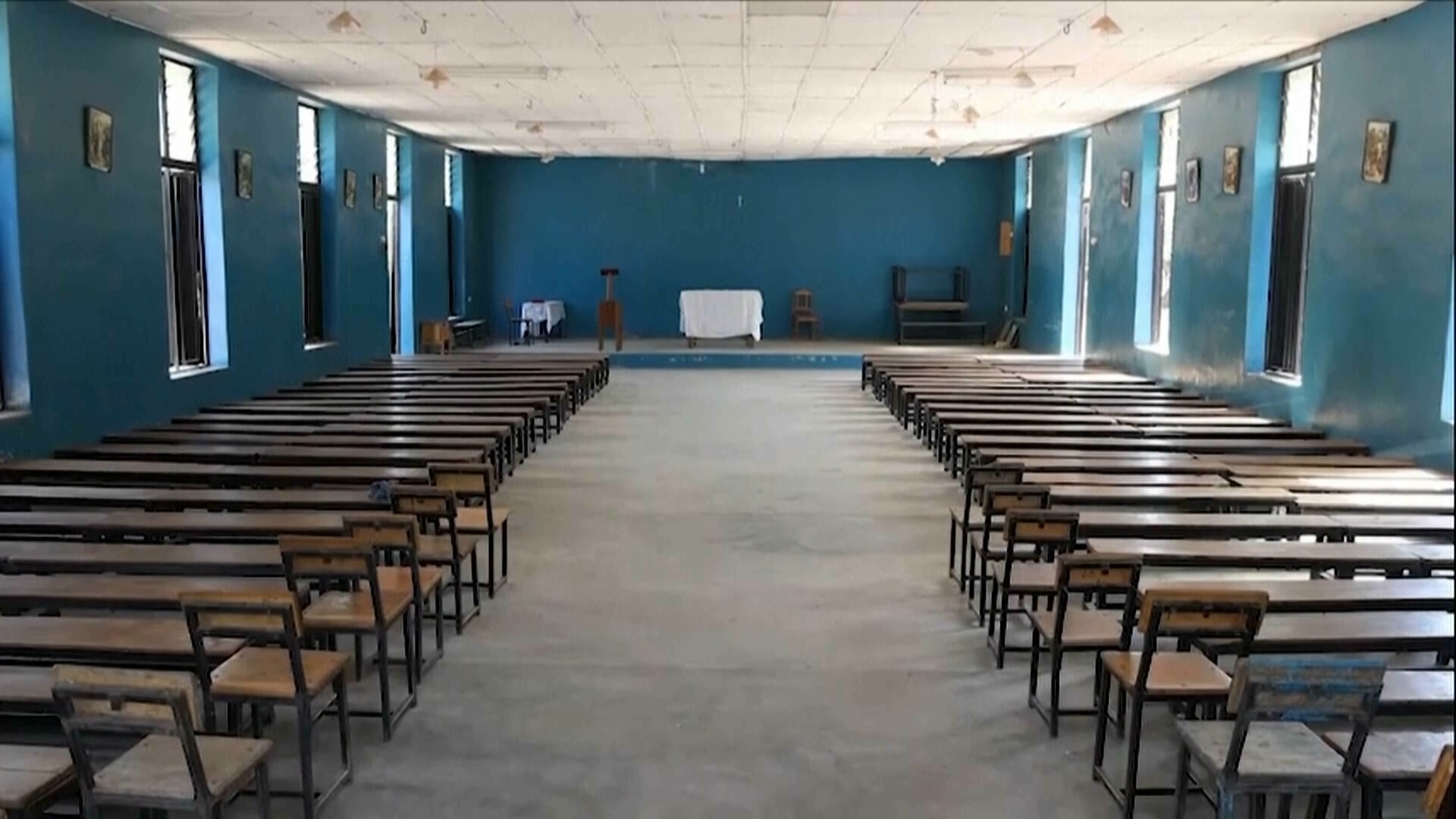STUDIO: The House of Representatives could vote on the bipartisan infrastructure bill this week, and it's sure to include transportation improvements along with measures to provide clean drinking water for 10 million American households and expanded broadband.
Stephanie Liebergen joins us now live from Washington with details on the Biden administration's plan to tackle this issue. Stephanie, good morning, what's the latest?
STEPHANIE LIEBERGEN: So the bipartisan infrastructure bill, we're still awaiting that vote in the House that we've been waiting for for weeks now. It is tied to the future of the larger bipartisan or the larger social spending bill that we are waiting on now in the last week or so. I really took a dive into the bipartisan infrastructure bill and looking at one specific element of it and kind of what it would do for homes across the country. So in terms of water infrastructure, which is a part of the bipartisan bill, the bill sets aside $55 billion to improve water infrastructure-related issues across the country. Now, a subset of that money, $15 billion, is earmarked specifically to help replace lead service lines. So these are the individual pipes that run into someone's house that might still be made with lead, which is a problem. Officials across the country have known for years and for decades now how big of a problem lead is anywhere, especially in drinking water for kids, for expectant mothers. So that is something that lawmakers are certainly trying to fix or trying to help with the bipartisan infrastructure bill. I talked to some advocacy groups who said the money is great, but it won't get the country all the way there, it won't be enough money to replace every lead service line across the country. But it's definitely a good start. And officials just need to make sure if that money comes through, that it's distributed in an equitable way to make sure that it goes to some of the neighborhoods most in need.
STUDIO: Well, Stephanie when people get this information, they think, "OK, how does this impact me?" So for someone at home listening right now who discovers that they do have these lead water pipes at home — what does the replacement process entail?
LIEBERGEN: So that was really interesting to me as well. I actually went up and saw the lead pipe replacement process for a home in Northwest D.C. Now in the District of Columbia, there are a few different programs that the city has to offer to help homeowners get those lead service lines, those lead water pipes replaced. Now, if it's something that you discover in your local home, that you might have some lead water pipes, start with your local water officials, start with your local city officials, they're most likely to have some kind of program or information to help you figure out either how to fund the replacement process or for the city to come in and do it themselves. So what I saw up in Northwest D.C. last week, it's actually fascinating to see how they pull the pipes. They literally string it through and pull the old lead pipe out as they're pulling in the new one, kind of in one swoop. It's not a big mess. They're not digging up your whole front yard. The house that I saw, I was able to talk to the homeowner whose house was recently purchased, it was up for sale, and I talked to the new homeowner and he said part of the reason that he wanted to make sure that these lead water pipes were replaced before he and his family moved in is because they've got two young kids and it was really important to them to get those lead pipes out, get any risk of lead in their water out, before he and his family moved in. This in particular is in the spotlight because of the Flint, Michigan, water crisis. I think around 10,000 kids had potential lead exposure there.
STUDIO: How many across the country are still in use and what's the biggest hurdle to that process you just mentioned?
LIEBERGEN: So Flint is certainly not alone. We've even had recent headlines of a state of emergency in Benton Harbor, Michigan, where lead was such an issue that they're handing out hundreds of thousands of bottles of water for families to use for everything from washing their dishes to taking a shower to flushing their toilets. So it is still a big issue across the country. Officials I talked to estimate there's somewhere between 15 million and 25 million homes in the U.S. that still might be serviced by some kind of lead water pipe. This isn't something that's easy to have a hard number on. Everything is a bit of an estimate. Even here in Washington, D.C. — the head of D.C. water told me that they know they have 10,000 homes that are served by lead water pipes. There are another 16,000 homes where they just don't know, they're not 100% sure whether or not there's a lead water pipe in the ground serving those additional 16,000 homes. But nationwide it is still a big issue. The biggest thing that officials say they need to get those lead water pipes replaced is funding. And so that's where the bipartisan infrastructure bill really comes in with folks telling me that it could be a game changer for their local community and helping get these lead service lines replaced. But that's not the only issue. It's not just funding. I talked to Scott Barry from the U.S. Water Alliance and he told me that local politics come into play as well. So there's a lot of issues involved in this. But funding being the biggest one that would kind of help get these pipes replaced. It always comes down to money.











